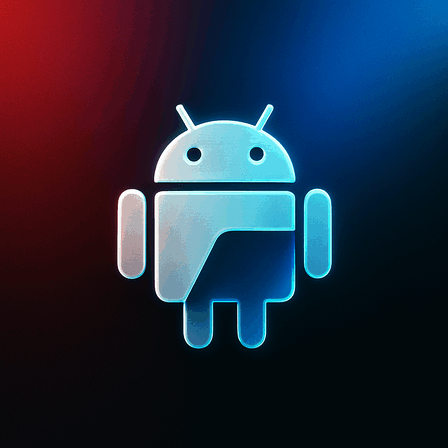
Wearable Tech Integration With Android Phones
A Comprehensive Guide for the Modern User In the rapidly evolving landscape of personal technology, wearable tech integration with Android phones has become more than just a convenience; it’s a fundamental shift in how we interact with our digital lives. From fitness trackers that meticulously monitor every step to smartwatches that bring notifications to our wrists, wearables are designed to seamlessly extend the functionality of our Android devices. This blog post will delve deep into the world of wearable technology, exploring its profound impact on Android users, the latest innovations, and how to maximize your wearable experience.
The Synergy of Android and Wearables
Android’s open-source nature has fostered a rich ecosystem for wearable technology. This flexibility allows a diverse range of manufacturers to develop devices that effortlessly pair with Android smartphones, offering users an unparalleled choice. The integration goes beyond simple connectivity; it’s about creating a cohesive digital experience where your phone acts as the central hub, processing and presenting data collected by your wearables. This synergy empowers users with real-time insights into their health, productivity, and overall well-being.
The Evolution of Wearable Technology
The journey of wearables has been remarkable. What began with rudimentary pedometers has blossomed into sophisticated devices capable of ECG readings, blood oxygen monitoring, GPS tracking, and even contactless payments. The advancement in sensor technology, coupled with more powerful and energy-efficient processors, has enabled these devices to become indispensable tools for many. As these technologies continue to mature, we can anticipate even more innovative features that will further blur the lines between our physical and digital worlds.
Key Categories of Wearable Devices for Android Users
- Smartwatches: The quintessential wearable, smartwatches offer a myriad of features including notification alerts, fitness tracking, heart rate monitoring, music control, and even the ability to make calls directly from your wrist. Brands like Samsung, OnePlus, and Google (with Wear OS) lead the charge, offering devices that are deeply integrated with the Android ecosystem.
- Fitness Trackers: Designed primarily for health and fitness monitoring, these devices track steps, calories burned, sleep patterns, and various exercise activities. Many fitness trackers now include advanced features such as stress monitoring and guided breathing exercises, providing a holistic view of your health.
- Wireless Earbuds and Hearables: While often overlooked as “wearables,” advanced wireless earbuds like the Bose QuietComfort Ultra Earbuds (amzn.to) and the Jabra Elite 10 Wireless Earbuds (amzn.to) offer much more than just audio playback. They often include fitness tracking capabilities, real-time language translation, and augmented audio experiences, making them a crucial part of the wearable tech integration with Android phones landscape.
- Smart Rings: Emerging as a discreet alternative, smart rings pack a surprising amount of technology into a small form factor, offering health tracking and contactless payment options.
- Smart Clothing: While still in its nascent stages, smart clothing with embedded sensors promises to revolutionize how we monitor our health and performance, offering unparalleled comfort and accuracy.
Maximizing Your Wearable Experience with Android
To truly harness the power of wearable tech integration with Android phones, consider the following:
- App Ecosystem: Explore the vast array of Android apps designed to work with your wearables. These apps often provide detailed insights, customization options, and advanced features that enhance your device’s functionality. For those interested in building their own online presence and exploring affiliate marketing opportunities, a platform like Wealthy Affiliate can provide the necessary tools and training to get started and monetize your tech enthusiasm (wealthyaffiliate.com).
- Permissions Management: Be mindful of the permissions you grant to wearable apps. While essential for functionality, understanding and managing these permissions is crucial for privacy and data security.
- Battery Optimization: Learn how to optimize the battery life of both your Android phone and your wearable. Features like always-on displays and continuous heart rate monitoring can significantly impact battery duration.
- Software Updates: Regularly update your wearable’s firmware and your Android phone’s operating system. Updates often bring new features, performance improvements, and crucial security patches.
- Personalization: Take advantage of the customization options available. From watch faces to notification preferences, tailoring your wearable to your needs enhances both usability and enjoyment.
The Impact on Health and Wellness
Perhaps the most significant contribution of wearable tech integration with Android phones is its impact on health and wellness. These devices empower individuals to take a proactive role in managing their health.
- Activity Tracking: Wearables encourage a more active lifestyle by setting goals, tracking progress, and providing motivational nudges.
- Heart Rate Monitoring: Continuous heart rate tracking can identify unusual patterns, providing early warning signs for potential health issues.
- Sleep Analysis: Understanding sleep patterns can lead to better sleep hygiene and improved overall health.
- Stress Management: Many wearables now offer stress level monitoring and guided breathing exercises to help manage daily stressors.
- Emergency Features: Some smartwatches offer fall detection and emergency SOS features, providing a vital safety net for vulnerable individuals.
The Future of Wearable Tech and Android
The future of wearable tech integration with Android phones is incredibly promising. We can expect:
- Enhanced AI and Machine Learning: Wearables will become even smarter, offering more personalized insights and predictive analytics based on individual data.
- Miniaturization and Discreet Design: Devices will become smaller, more comfortable, and seamlessly integrated into everyday items, making them almost invisible.
- Advanced Biometric Sensors: Expect to see more sophisticated sensors capable of monitoring blood sugar levels non-invasively, continuous blood pressure, and even early disease detection.
- Augmented Reality (AR) Integration: Smart glasses and other AR wearables will provide contextual information overlays, transforming how we perceive and interact with our environment.
- Improved Interoperability: A more standardized approach to data sharing and connectivity will ensure that different wearables and Android devices communicate more effectively, creating a truly unified ecosystem.
Conclusion
The journey of wearable tech integration with Android phones is one of constant innovation and increasing sophistication. These devices are no longer mere gadgets; they are extensions of ourselves, providing invaluable data, convenience, and a pathway to a more informed and healthier lifestyle. As the technology continues to evolve, the synergy between Android and wearables will only deepen, promising an exciting future where our digital companions seamlessly blend with our physical world. Embracing this technology responsibly, understanding its capabilities, and actively engaging with the rich ecosystem of apps and services will ensure that Android users remain at the forefront of this technological revolution.

